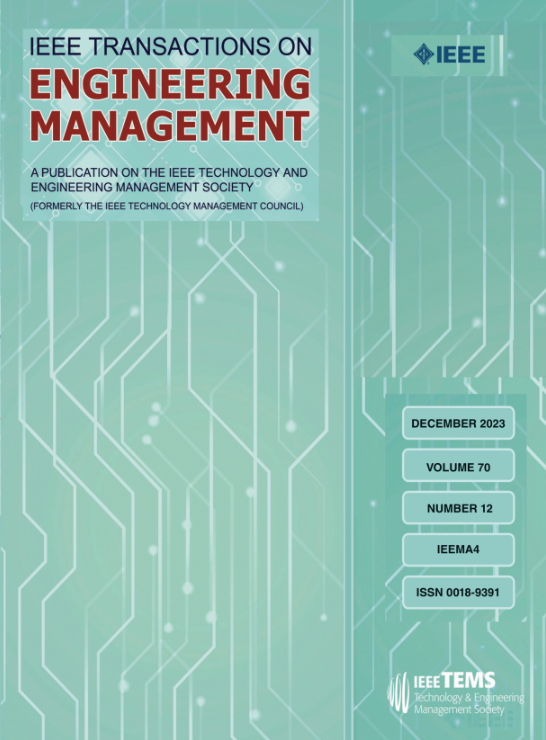Data-Driven Identification of Industrial Clusters: A Patent Analysis Approach
IF 4.6
3区 管理学
Q1 BUSINESS
引用次数: 0
Abstract
Accurate identification of industrial clusters (IIC) serves as a reference for regional economic policymaking and enterprise development decision-making. Although data-driven methods have been extensively used in previous studies to support objective and effective work, both the data sources and research algorithms have significant shortcomings for IIC. To address these challenges, this article proposes a novel research framework that integrates patent mining and machine learning. Patents, with their quantifiable knowledge attributes and accessibility from public databases, are particularly suited for macrolevel analysis of innovation activities, providing robust support for identifying and analyzing clusters on a national scale, especially knowledge-intensive ones. This article introduces an improved density-based parameter adaptive algorithm designed to effectively carry out IIC based on the geographical location of patent applicants. Based on spatial cluster types defined by Markusen (1996), target clusters are classified using patent analysis. Four quantitative indexes–scale, output, efficiency, and quantity–are proposed to evaluate clusters based on their spatial structure and industrial organization. The practical application is demonstrated through a case study of China's flexible electronics industry. In addition, the Silhouette Coefficient index is employed to compare the effectiveness of the proposed algorithm against other methods. This article advances the theory of IIC, and provides foundation for scholars, calling for empirical research on industrial clusters from the perspective of individual enterprises. It also provides practical guidance for enterprises and policymakers on the application of IIC.数据驱动的产业集群识别:专利分析方法
准确识别产业集群(IIC)可为区域经济政策制定和企业发展决策提供参考。尽管数据驱动方法已在以往的研究中得到广泛应用,为客观有效的工作提供了支持,但对于产业集群识别而言,数据来源和研究算法都存在明显不足。为了应对这些挑战,本文提出了一种将专利挖掘与机器学习相结合的新型研究框架。专利具有可量化的知识属性,且可从公共数据库中获取,因此特别适合对创新活动进行宏观分析,为在全国范围内识别和分析集群,尤其是知识密集型集群提供有力支持。本文介绍了一种改进的基于密度的参数自适应算法,旨在根据专利申请人的地理位置有效地开展创新集群分析。根据 Markusen(1996)定义的空间集群类型,利用专利分析对目标集群进行分类。提出了规模、产出、效率和数量四个定量指标,根据空间结构和产业组织对集群进行评价。通过对中国柔性电子产业的案例研究,展示了该方法的实际应用。此外,还采用了剪影系数指数来比较所提算法与其他方法的有效性。本文推进了 IIC 理论的发展,为学者们提供了基础,呼吁从单个企业的角度对产业集群进行实证研究。文章还为企业和政策制定者应用 IIC 提供了实践指导。
本文章由计算机程序翻译,如有差异,请以英文原文为准。
求助全文
约1分钟内获得全文
求助全文
来源期刊

IEEE Transactions on Engineering Management
管理科学-工程:工业
CiteScore
10.30
自引率
19.00%
发文量
604
审稿时长
5.3 months
期刊介绍:
Management of technical functions such as research, development, and engineering in industry, government, university, and other settings. Emphasis is on studies carried on within an organization to help in decision making or policy formation for RD&E.
 求助内容:
求助内容: 应助结果提醒方式:
应助结果提醒方式:


